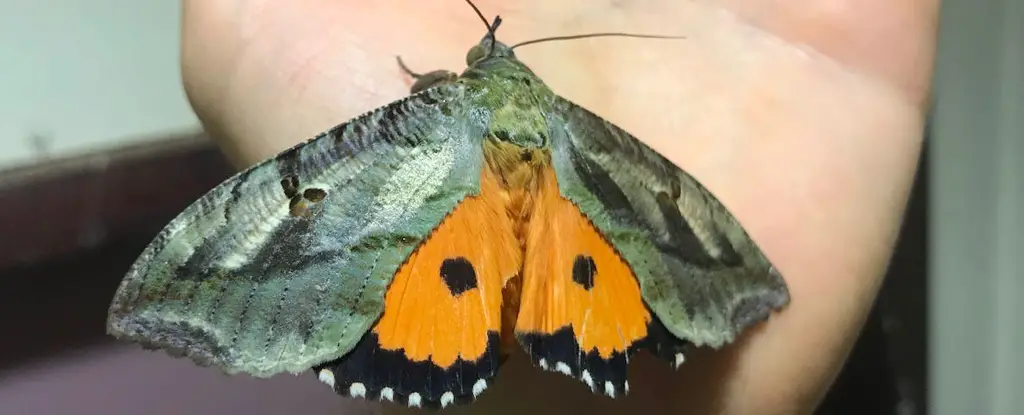Our Lockdown Study: Cataloging 1,150 Species on Our City Property
As biodiversity researchers, an ecologist, a mathematician, and a taxonomist, we found ourselves locked down together during the COVID-19 pandemic. With limited options for venturing outside, we turned our attention to the species of plants and animals sharing our living space. Our curiosity led us to embark on a journey to count and document them all.
Initially, we estimated finding around 200-300 species, which was a similar guess made by many of our colleagues. At a glance, our 400-square-meter block of land in Annerley, a suburb of Brisbane in Queensland, Australia, seemed unremarkable, with about half of the area being taken up by a three-bedroom house.
However, what was truly remarkable was the unexpected discovery of 1,150 species on our property, as detailed in our recently published study. This exploration began on the first day of lockdown and extended over the course of a year.
Discovering the Extraordinary
The abundance of wildlife we encountered included both familiar and rare species. Among the creatures commonly found in Australian suburban areas were ibises, brush turkeys, kookaburras, possums, and flying foxes. Yet, to our surprise, there were many more species that had rarely, if ever, been recorded in the area.
Remarkably, three of the 1,150 species had never been documented in Australia’s leading biodiversity database up to that point. These included a rare mosquito, a sandfly, and an invasive flatworm with the potential to negatively impact native snail populations.
In addition to these uncommon finds, we also came across 13 different mosquito species, along with pantry moths, grain weevils, and an astonishing 56 species of spiders to prey upon them. Notably, our relaxed approach to garden maintenance led to prolific weed growth, with 100 out of 103 documented plant species being non-native. Despite this, the majority of species discovered were actually native, thriving around the shade, shelter, and food provided by our two large lilly-pilly trees.
Rich Diversity of Insects
Our property was teeming with pollinators, including hoverflies, blue-banded bees, and fluffy teddybear bees, among a total of 70 observed bee and wasp species. Notably, our inventory of butterflies and moths revealed a staggering 436 species, ranging from the large and conspicuous to the tiny and inconspicuous.
Uncovering Intriguing Behavior
As we delved deeper into our study, we uncovered some fascinating behaviors. For instance, the vampire moth Calyptra minuticornis, which may appear unremarkable at first, revealed intriguing behavior upon closer observation. In addition, we observed the caterpillars of the moth Scatochresis innumera living inside possum poop before emerging as adults. Equally fascinating was the behavior of the caterpillars of the moth Parilyrgis concolor, which reside in spiderwebs, feeding on the spider’s discarded food, and the adults of this species were observed hanging bat-like from the webs.
Insights into Urban Ecosystems
Our study has provided valuable insights into urban ecosystems, demonstrating that even highly developed areas can support a rich and diverse array of wildlife. A key contributing factor to this unexpected discovery was the presence of vegetation in our yard, promoting biodiversity and offering essential habitat. Our findings underscore the importance of incorporating native trees, shrubs, and flowering weeds into urban landscapes, as they contribute significantly to the vitality of local wildlife populations.
The Complex World of Urban Wildlife
Our findings also shed light on the intricate relationships at play in urban environments. For instance, we identified ten species of lycaenid “blue” butterflies, some of which utilize ants to safeguard their caterpillars from predators, including certain parasitic wasp species. These parasitoid wasps, in turn, parasitize other insects, highlighting the complexity and interdependence of urban ecosystems.
Challenges and Future Respects
Our study also raised concerns about the decline in beetle populations, as we observed just under 100 species. While beetles are traditionally considered the most diverse order of insects on the planet, our findings may indicate a possible decline in their numbers, pointing to the need for further investigation and monitoring.
Encouraging Urban Wildlife Encounters
Ultimately, our study highlights the potential for extraordinary encounters with nature, even within urban environments. By nurturing biodiverse habitats, whether through the deliberate cultivation of native vegetation or the simple act of observing our surroundings, we can become more attuned to the remarkable biodiversity that exists alongside us.
As part of the global mission to conserve biodiversity, it is essential for us all to appreciate and safeguard the diverse ecosystems and species that enrich our lives. Whether it’s a porch light or a balcony, opportunities to encounter urban wildlife abound, offering glimpses into a world of astonishing beauty and complexity, right outside our doorsteps.
Matthew H. Holden, Lecturer, School of Mathematics and Physics, The University of Queensland; Andrew Rogers, PhD student, The University of Queensland, and Russell Q-Y Yong, PhD candidate, Marine Parasitology, The University of Queensland
Source link

